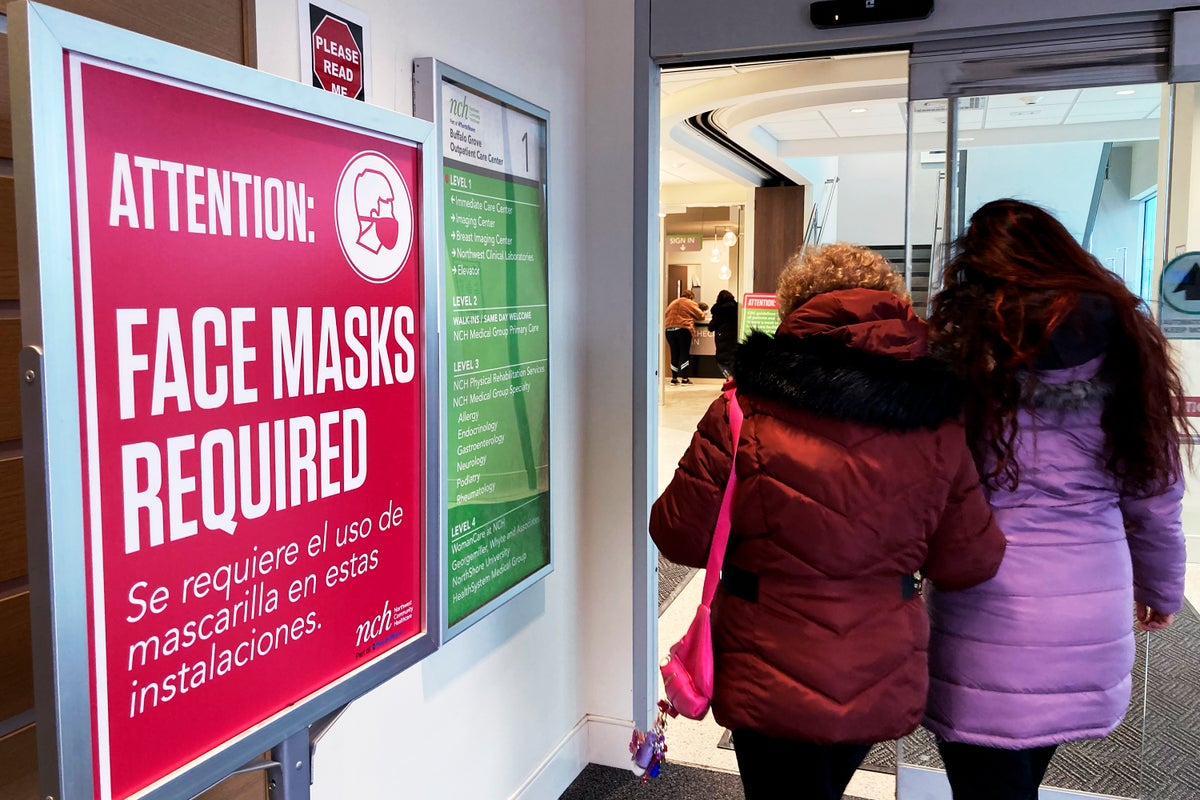
Covid-19 cases are on the rise in California and nationally, but the true impact of the surge might be unclear given the ending of the public health emergency.
Data from pharmacy chain Walgreens shows a rise in positive test results at its outlets in California, up to 48.3 per cent last month compared to 27 per cent in June. The national average is currently 44.7 per cent across Walgreens’ 5,000 pharmacies.
Hospitalizations are also on the rise in the state, according to the California Department of Public Health. In the week ending 15 August, the average for hospitalised patients over a two-week period was 1,055, whereas the average in the week ending 6 July was 754.
The numbers aren’t as bad as last year — last year’s statewide average of hospitalized patients during the summer was 4,700.
Nationally, too, the US has seen an increase in hospital admissions with coronavirus for the first time since December 2022, with the Centers for Disease Control and Prevention noting a 12.5 per cent rise in the week ending 29 July.
However, the true extent of this Covid-19 surge is unclear for a number of reasons: the Biden administration, which ended the public health emergency in April, stopped mailing at home Covid tests and insurers are no longer covering coronavirus tests. While the Walgreens data shows an uptick, it does not take into account people who test at home rather than head to a clinic.
A new variant, known as EG5 and nicknamed Eris, could be the cause of this mini surge.
Dubbed a “variant of interest” by the World Health Organization, EG5 has accounted for 17.3 per cent of American cases as of 5 August, up from 7.5 per cent in the first week of July and surpassing a number of Omicron descendants like XBB.1.16 (15.6 per cent of cases), XBB.2.23 (11.2 per cent) and XBB.1.5 (10.3 per cent).
“While the emergency of COVID has been lifted and we’re no longer in a crisis phase, the threat of COVID is not gone. So, keeping up with surveillance and sequencing remains absolutely critical,” Dr Maria Van Kerkhove, the World Health Organization’s technical lead for COVID-19, said on July 26.
Symptoms for Eris are similar to other coronavirus variants: runny or stuffy nose, headache, fatigue, sneezing, sore throat, coughing and changes to smell.
According to a report by Fox 11 Los Angeles, scientists believe this new variant is more resistant to antibodies built up from previous strains.
And Dr Sharon Nachman, chief of the division of pediatric infectious diseases at Stony Brook Children’s Hospital, told TODAY.com, that this new strain is also more transmissible.
“If it was equally transmissible, then we wouldn’t see it gaining strength number-wise compared to some of the other variants,”Dr Nachman said, adding that EG5 is pushing out other Omicron variants.
However, vaccines and herd immunity are still believed to be offering some protection from this new variant.
“Right now, what we’re seeing with the changes in the viruses, they’re still susceptible to our vaccine, they’re still susceptible to our medicines, they’re still picked up by the tests,” CDC Director Dr Mandy Cohen said in an interview with the “In the Bubble” podcast. “We’re seeing small changes that are what I would call subtypes of what we’ve seen before.”
Updated vaccines should become available by September, she said.
“We anticipate that they are going to be available for most folks by the third or fourth week of September,” Dr Cohen said.
And, she added, that the CDC is likely to recommend an annual Covid shot just like the flu shot.
“We’re just on the precipice of that, so I don’t want to get ahead of where our scientists are here and doing that evaluation work, but yes we anticipate that COVID will become similar to flu shots, where it is going to be you get your annual flu shot and you get your annual COVID shot,” Dr Cohen told Spectrum News in July.
If you do get Covid, the CDC’s recommendations haven’t changed. Stay at home, isolate, wear a mask if you are around people, follow doctor’s orders, practise hygiene when handling shared goods and get rest.







